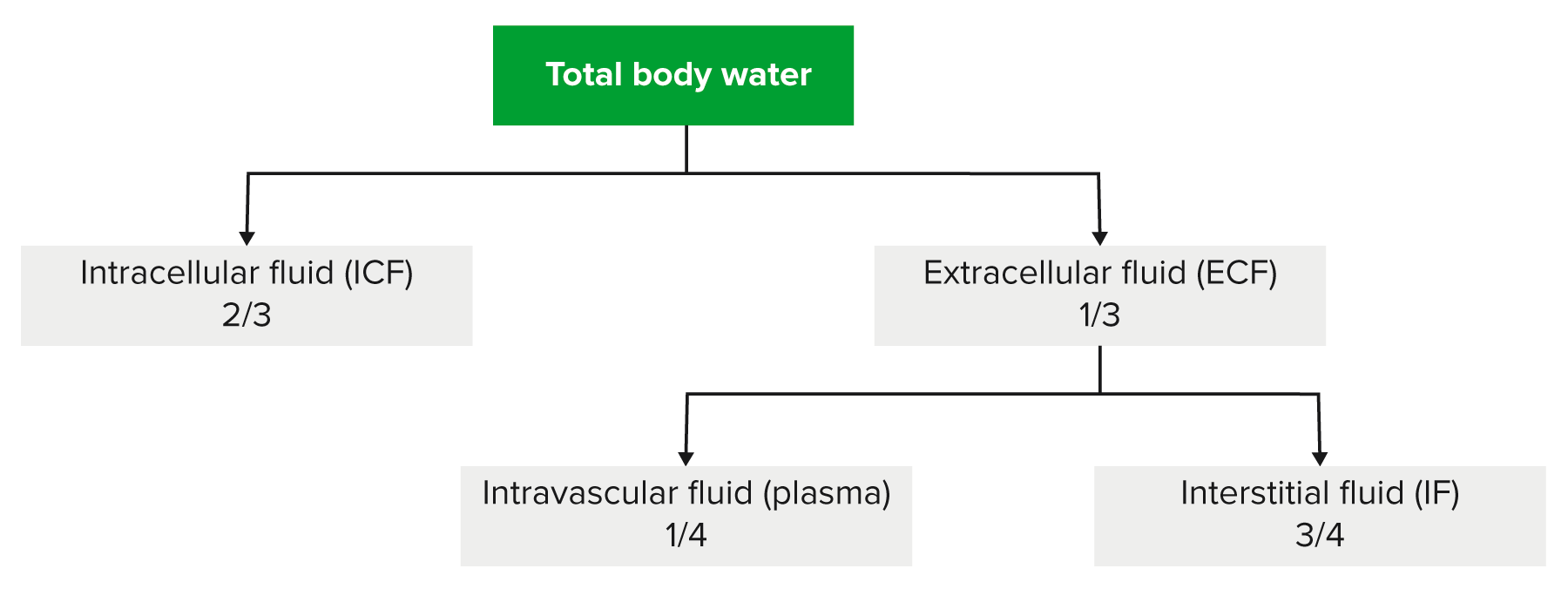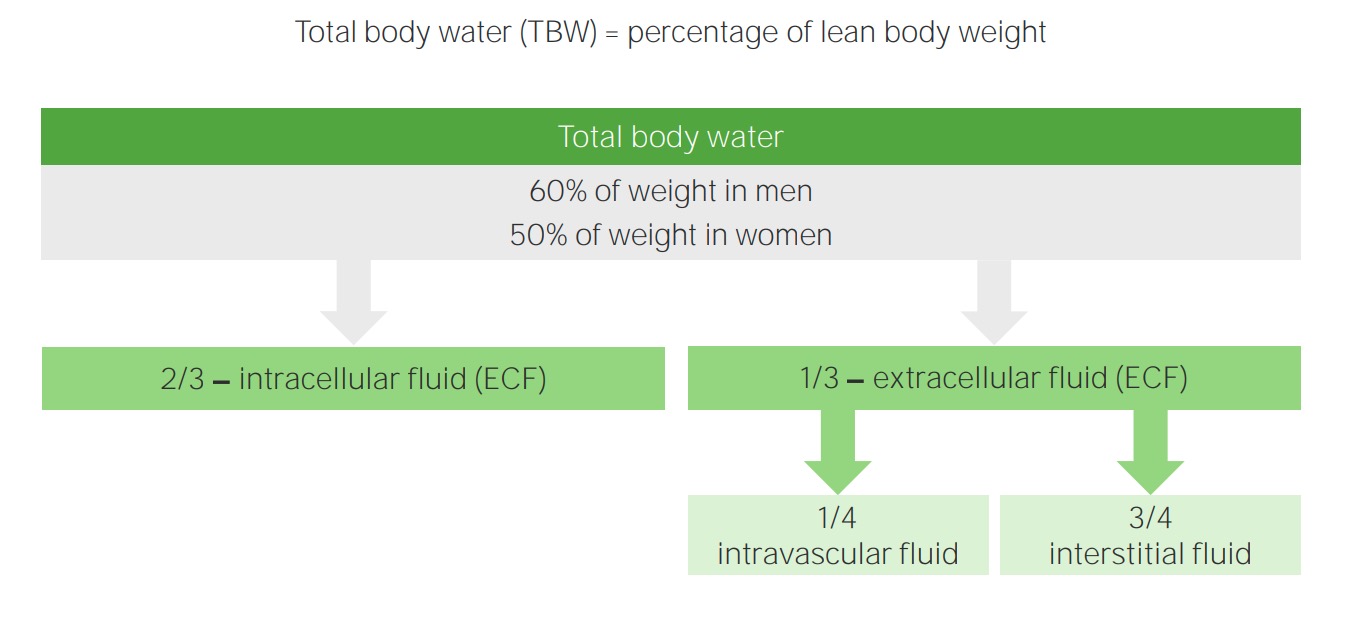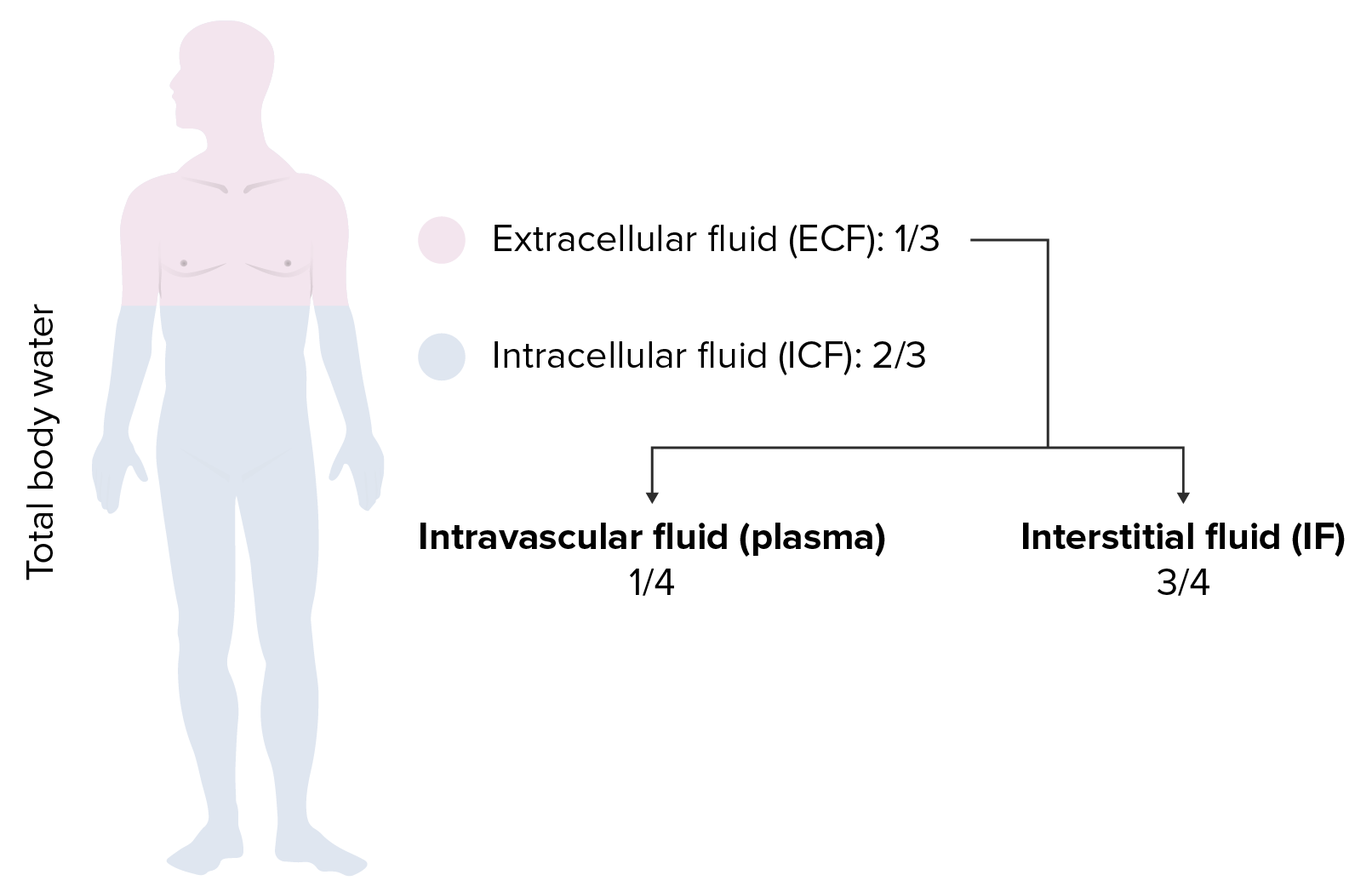Playlist
Show Playlist
Hide Playlist
Types of IV Fluids (Intravenous Fluids): IVFs Summary
-
Slides TypesofIVFluids RenalPathology.pdf
-
Reference List Pathology.pdf
-
Download Lecture Overview
00:00 So you have your NaCl which is your crystalloid. Take a look at what colloids are in summary. Everything we have done here, we're pretty much finished. A table to summarize everything we discussed. 00:08 Colloid, packed RBCs, albumin, FFP. Where are colloids always located? Really a good component to then fill up the plasma compartment. Next, packed RBCs, what does it do? Well, you give packed RBCs, this then increases hemoglobin now. A couple of things that I wish to bring to your attention. You are going to like this. Okay. If you have packed RBCs and you are giving this two patient, is there any point in time in which perhaps you have an athlete? They might be taking RBCs or not exactly may be an athlete but something that is equivalent to giving an RBC or production of RBC. EPO perhaps, or erythropoietin. So the reason I say this is because maybe you are making better sense of what is going on here? Why an athlete might want to be taken EPO is because that athlete especially let us, say oh! our lovely friend Neil Amstrong, and he have got a script of awards because of blood doping, is well you give the EPO or packed RBCs, what are you trying to do? Increase production of, well what is it called? The erythropoiesis, RBCs. And when you and whatever means either through hormone, EPO or packed RBCs, you are going to increase hemoglobin thus increase oxygen carrying capacity. Now obviously this isn't a clinical setting. 01:43 So forget about that athlete, but as to the clinical setting, this is a patient that has had acute blood loss, severe anemia. What kind? We will get into that later. But severe anemia here would in fact be normocytic and you will call it nonhemolytic. But Dr. Raj, how can you call this nonhemolytic? Well, let us see. Did the RBCs perish within the body when you lose your blood? You see the blood spurting out right now. The RBCs didn't die inside your body. 02:13 I don't care if the RBCs has die that on the floor. Hence, you have to call it nonhemolytic. Is that dramatic enough for you? Put yourself, give yourself clinical attacks every step of the way. Platelets, what is going on here? Stop significant bleeding, in quantitative and qualitative platelet dysfunctions or dysfunctional conditions. For example, Let me give you one quantitative. What is that one in which that patient, unfortunately, looks close to death, bleeding from orifice, mucous membrane, PT, PTT, BT were all elevated and you find your platelet count to be decreased? So thrombocytopenia, is quantitative, decreased platelet count. Would you tell me what normal platelet count is? 150,000 to 400,000. That you have memorized. 150/400. So what are the boards going to give you? They will give you 50,000, which is clinically significant. You will know that your patient has a quantitative decrease in platelet. What about qualitative? Give me an example of qualitative? How about this one? One in which you find your bleeding time to be elevated. PT, PTT is normal. Actually any time that you have a platelet defect, what should be the major test that is going to be affected? Is it? I am giving the options. Is it BT, is it PT or PTT? Good. BT What is BT? Bleeding time. When you are only dealing with platelet dysfunction either quantitative or qualitative, it is bleeding time that you know being elevated. That is it. So qualitative, bleeding time is elevated, what if I told you that your patient has a hard time binding your platelet to your von Willebrand factor. You know the name of that glycoprotein? You better. It is called glycoprotein Ib. What is the name of that disease? Bernard–Soulier. 04:19 So that is a qualitative disease. Are we clear? Let us move on. FFP, that patient who had DIC, you want to make sure that you do what? You give FFP, which is filled with coagulation factors. Now I want to be more technical now because if we have DIC, late stages, well how's my patient presenting? Oh! my goodness, every single coagulation factor has been consumed. 04:45 Hence, it is called consumption coagulopathy. So thus you want to give FFP as being your mode of treatment. Cryoprecipitates , I told you that this is a form of your plasma components, but take a look at many of these factors here. Many of the factors begin with the letter F. 05:06 Use that to your advantage. Fibrinogen, fibronectin. Next, make your life easier. 05:14 This is important. What if you find a patient, I am giving a lot of clinical correlation, but this is good, right, because of reinforcement and summary. Otherwise, you are just reading through this and what is the point. I mean you can do this on your own. So here is your patient. 05:29 A patient comes in and there's bleeding taking place. There is even hemarthrosis. What does that mean? Bleeding into the joints. Okay. Now you take a look at the labs and all that you find is an increase in PTT. PT is normal, bleeding time is normal. Further investigation then shows you that your patient has deficiency of factor VIII. What is my diagnosis please? Hemophilia A or B? A. Now work with me, ready, pay attention. A comes before B, 8 comes before 9, what am I getting at? I think you know. Hemophilia A is issues with factor VIII deficiency. 06:14 Hemophilia B, which is the next letter is hemophilia B is your factor IX, the number after 8. Are we okay? That is imperative that you know. Next von Willebrand factor. 06:27 You want to put those together. How in the world can you possibly have factor VIII work together? How can you possibly of optimum factor VIII functioning? You must have von Willebrand factor. 06:39 What is all this? This is all cryoprecipitate. Fibrinogen, fibronectin, factor VIII, von Willebrand factor. Take a look at my pathologies, factor VIII dysfunction, hemophilia A, and von Willebrand disease. Once again, close your eyes, von Willebrand disease. Who is your patient that I gave you? Female, menses, menorrhagia. Blood test came back to be positive for well remarkable for a prolonged PTT and a prolonged BT, bleeding time. Welcome to von Willebrand disease. 07:17 Now blood transfusions themselves have particular issues and you will be asked the following. 07:23 The most updated information in terms of feedback and such that you need to make sure that you are quite comfortable with. One is called TACO, the other one is called TRALI. What is going on here? These are transfusion reactions. We have transfusion associated circulatory overload and that is going to be TACO and the other one is called transfusion related acute lung injury. So once the circulatory overload, at least pay attention to CO and TACO, and at least pay attention to LI, lung injury, and TRALI. Keep those in mind. Those are important transfusion reaction issues if your patient requires transfusion. Why do we even need a transfusion perhaps? Maybe there's blood loss. Maybe there is iron deficiency anemia that was so bad and once your hemoglobin levels start dropping, at 8 maybe even 7 g/dL, not good. Hemochromatosis. I am sorry. What is going on here? Listen. The way to read this, interpret this, by giving your blood transfusion, you might then be introducing what? Too much iron. What is this? Secondary hemochromatosis. Are we clear? What else may happen upon administering transfusion? Citrate chelation of calcium. Hyperkalemia that is the big one okay. A lot of times what ends up happening is that say that your patient, take a look at the very first row, what kind of component was that? Packed RBCs. Where do you store them? Where do you store packed RBCs? In a blood unit that is rather cold. 09:07 If it is sitting there for a long period of time, is it just possible that some of those RBCs might actually die? Yes, and may result in? Release of potassium. Does that make sense to you? I hope so. Inside the cell, what is the most abundant electrolyte? Potassium. 09:24 So hyperkalemia. For you, I will take a second here to make sure that you are completely comfortable with those reactions and those side effects that may commonly occur by giving transfusions. Now, the one that we really don't have as much anymore of course, would then be your hepatitis C. You know we have enough measures where that rarely occur, we will just put it that way.
About the Lecture
The lecture Types of IV Fluids (Intravenous Fluids): IVFs Summary by Carlo Raj, MD is from the course Fluid and Electrolyte Balance.
Included Quiz Questions
Which of the following Intravenous fluids would increase hemoglobin and oxygen carrying capacity?
- Packed red blood cells
- Platelets
- Dextrose 5% Water
- Cryoprecipitate
- Fresh Frozen Plasma
Which of the following parameters would you expect to decrease in the setting of a quantitative platelet disorder?
- Platelet count
- Prothrombin time
- Von willebrand factor
- Bleeding time
- Partial thromboplastin time
Which of the following statements about Bernard Soulier syndrome is INCORRECT?
- Prothrombin time is increased.
- It is an issue with glycoprotein Ib
- It is a rare inherited disorder.
- It presents with increased bleeding time.
- It involves dysfunctional binding to von Willebrand factor.
Which of the following colloid intravenous fluids contains only fibrinogen, fibronectin, factor VIII, von willebrand factor?
- Cryoprecipitate
- Packed RBCs
- 5% Albumin
- Fresh frozen plasma
- Platelets
Which of the following is NOT a potential risk of blood transfusion?
- Primary hemochromatosis
- Transfusion associated circulatory overload
- Citrate chelation of calcium
- Hyperkalemia
- Transfusion related acute lung injury
Which of the following colloid fluids is used for the immediate management of bleeding due to warfarin?
- Fresh frozen plasma
- Platelets
- Packed red blood cells
- Cryoprecipitate
- Whole blood transfusion
Which of the following colloid fluids is used to treat hemophilia A?
- Cryoprecipitate
- Fresh frozen plasma
- Packed red blood cells
- Platelets
- Normal saline
Which of the following medical conditions can be managed by fresh frozen plasma transfusion?
- DIC
- Immunodeficiency states
- Pulmonary edema
- Heart failure
- Quantitative platelet disorders
Which of the following is a potential risk of blood transfusion?
- Hyperkalemia
- Hypokalemia
- Hypercalcemia
- Primary hemochromatosis
- Arterial thrombosis
Customer reviews
5,0 of 5 stars
| 5 Stars |
|
5 |
| 4 Stars |
|
0 |
| 3 Stars |
|
0 |
| 2 Stars |
|
0 |
| 1 Star |
|
0 |






